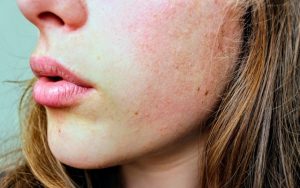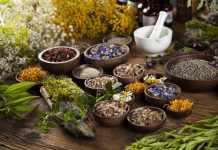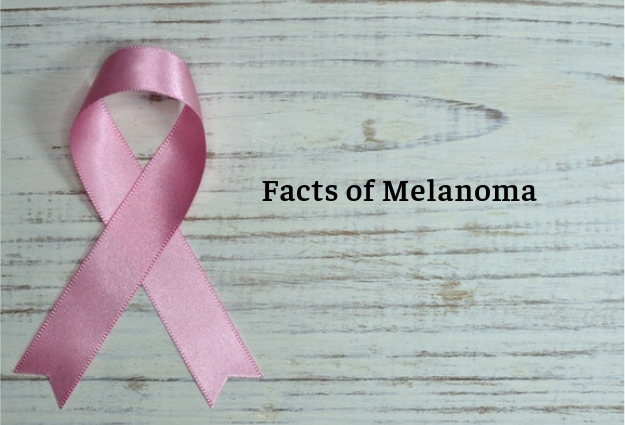Melanoma is a form of skin cancer that arises when pigment producing cells known as melanocytes which mutate and become cancerous. When it spreads to other places in your body, it’s called metastatic. It is rare in people with darker skin.
Affecting areas and parts of the body
Tissue under the skin
- Lymph nodes
- Lungs
- Liver
- Tissues around the brain and spinal cord
- Eyes
- Rarely in Internal Organs such as intestine
Causes
Skin cells develop in a controlled and orderly way ; healthy new cells push older cells toward your skin’s surface, where they die and eventually fall off. But when some cells develop DNA damage, new cells may begin to grow out of control and can eventually form a mass of cancerous cells.
People with certain types of skin are more prone to developing melanoma.  Risk factors of developing skin cancer are mentioned below
Risk factors of developing skin cancer are mentioned below
- high freckle density or tendency to develop freckles after sun exposure.
- high number of moles.
- five or more atypical moles.
- presence of small gray-brown spots, also known as liver spots, sun spots, or age spots.
- Brown skin marks that present at birth, also called birth marks.
- pale skin that does not tan easily and burns, plus light-colored eyes.
- red or light-colored hair.
- high sun exposure, particularly if it produces blistering sunburn and especially if sun exposure is intermittent rather than regular.
- risk increases with age.
- family or personal history of melanoma.
Symptoms
- Hardened lumps under your skin.
- Swollen or painful lymph nodes.
- Trouble breathing, or a cough that doesn’t go away.
- Swelling of your liver (under your lower right ribs) or loss of appetite.
- Broken bones, bone pain or less often.
- Headaches, seizures, weakness or numbness in your arms or legs.
- Weight loss.
- Fatigue.
Types of melanoma
- Superficial spreading melanoma: This is the most common and it often appears on the trunk or limbs.
- Nodular melanoma: It is the second most common type appearing on the trunk, head, or neck. It tends to grow more quickly
- Lentigo maligna melanoma: This is less common and tends to affect older people, especially in parts of the body that have been exposed to the sun over several years.
- Acral lentiginous melanoma: This is the rarest kind of melanoma. It usually appears on the palms of the hands, soles of the feet or under the nails.
Few Prevention methods
Avoid the sun during the middle of the day:Avoiding overexposure to the sun and preventing sunburn can significantly lower the risk of skin cancer. You absorb UV radiation year-round and clouds offer little protection from damaging rays. 
Wear sunscreen year-round: Apply sunscreen generously and reapply every two hours or more often if you’re swimming or perspiring. Use broad-spectrum, water-resistant sunscreen with an SPF of at least 30.
Wear protective clothing : Cover your skin with dark tightly woven clothing that covers your arms and legs and a broad-brimmed hat. Also use sunglasses which block UV radiations.
Avoid tanning lamps and beds. Tanning lamps and beds emit UV rays and can increase your risk of skin cancer.























